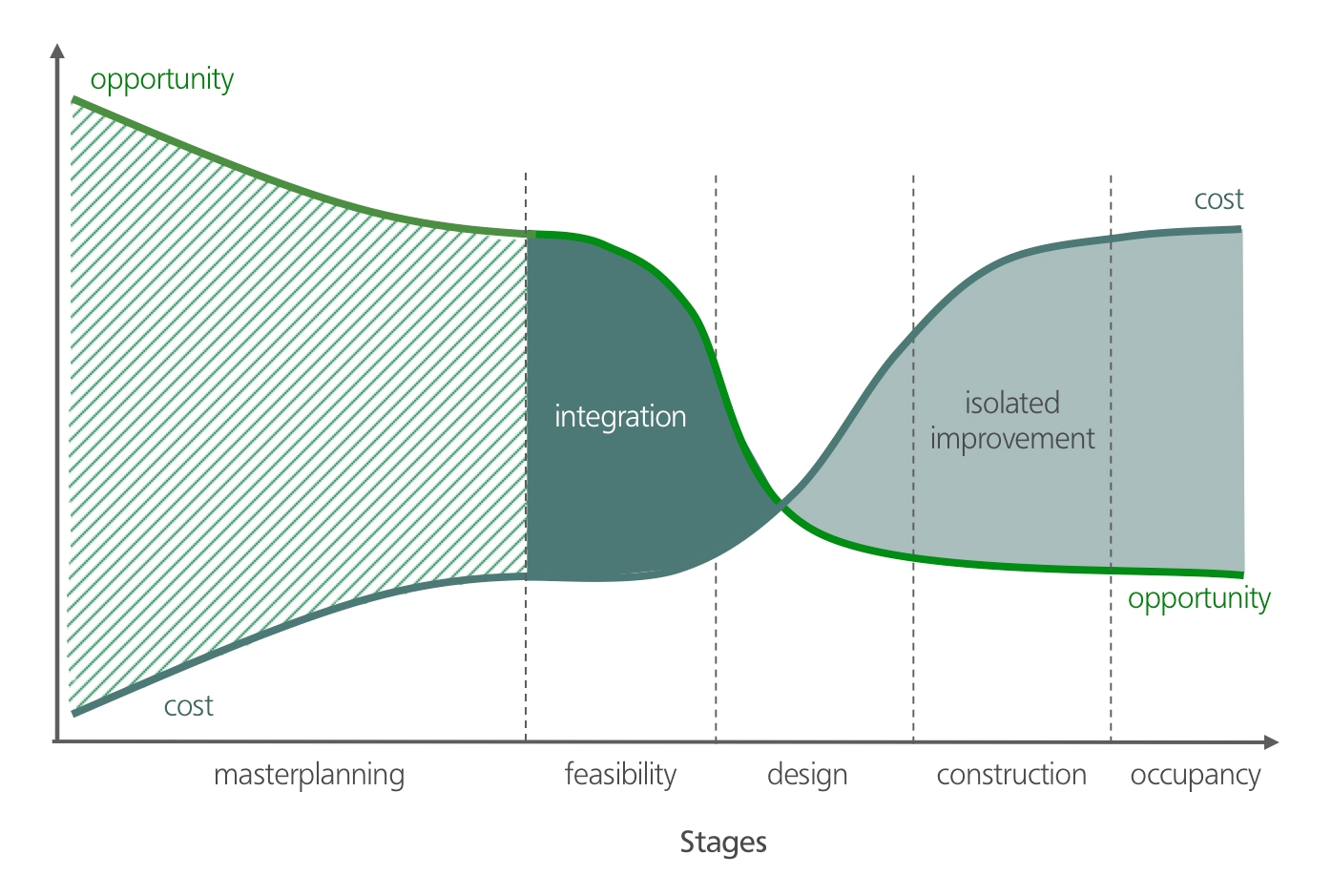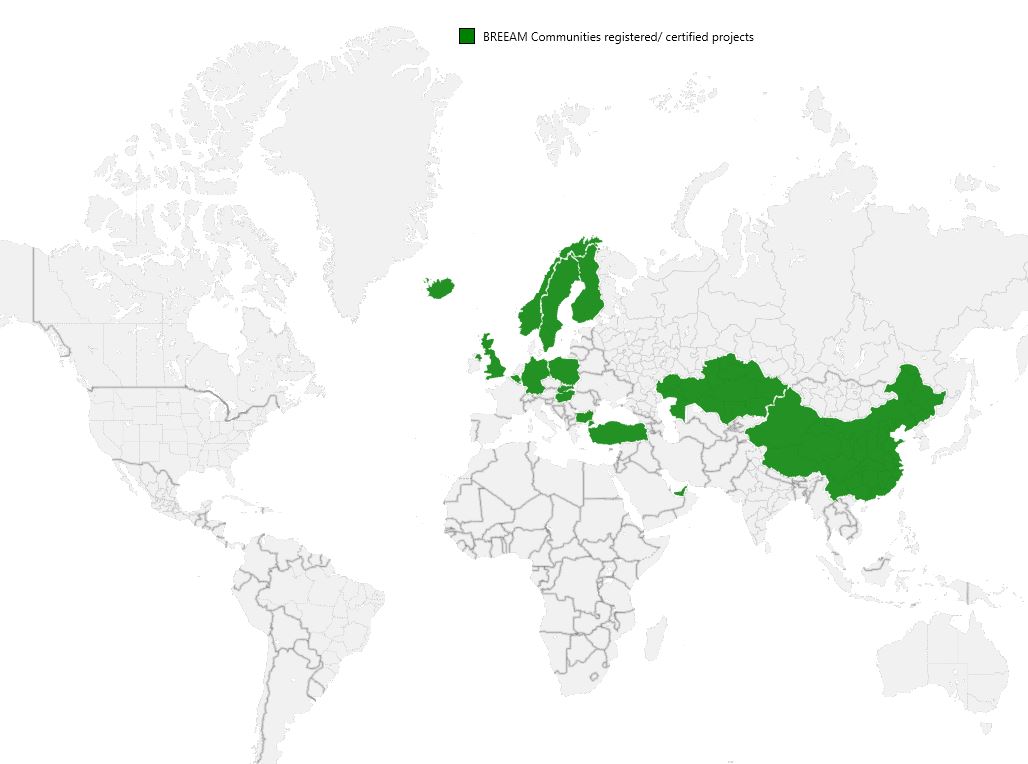The case for BREEAM Communities
BREEAM Communities is a way to improve, measure and certify the social, environmental and economic sustainability of the plans for large-scale developments by integrating sustainable design into the masterplanning process. There is a range of benefits for developers, local authorities and other masterplanning professionals from using BREEAM Communities. It significantly improves the process of stakeholder engagement on large developments, smoothing out the planning process and reducing associated costs. It also provides a credible and transparent means of measuring and defining sustainability at the neighbourhood scale, differentiating the site and demonstrating alignment with National Planning Policy Framework policies. This document further highlights the benefits of BREEAM Communities, including feedback from numerous stakeholders who have had experience of using the scheme.
Contents |
[edit] Creating sustainable places
BREEAM Communities supports the creation of more sustainable places by providing design teams with a simple framework to consider sustainability. The scheme supports engagement with the community and key stakeholders at the earliest possible stages, optimising the opportunity for the integration of sustainable design. Design teams have reported that using BREEAM Communities brought about a variety of sustainability benefits including:
- More sustainable, safe and well-integrated transport infrastructure
- Enhanced economic activity in the local area
- Vibrant public space, with well-integrated green infrastructure and high-quality landscaping
- Reduced energy and water demand, in turn, reducing operational costs
- Optimal provision of facilities, amenities, and utilities
[edit] Saving time and money
BREEAM Communities saves money and time by;
- Promoting early consideration of sustainable opportunities and challenges, thus ensuring that they are addressed with cost-effective solutions
- Using site-wide design approaches or technical solutions that result in economies of scale. For example energy technologies, drainage systems, materials, etc.
- Reducing long-term costs related to: security, flooding, transport infrastructure and social sustainability issues such as public health and fuel poverty, through good design
- Smoothing out and reducing costs in the planning process, by front-loading stakeholder engagement, resulting in a smoother and more efficient planning process, avoiding refusals and appeals and the need to re-work designs
- Increasing the long-term value of the area, promoting the higher sale and rental prices
[edit] Improving the planning process
Internationally, BREEAM Communities gives developers and local authorities a clear framework to demonstrate sustainability of a development proposal. Both parties know what to expect and can easily measure the sustainability outcomes and successes of the development. The scheme will aid pre-application discussions, bringing them to the forefront in the early stages of the project, thus improving efficiency and reducing the likelihood of the need to rework of designs.
In the UK BREEAM Communities helps to demonstrate that a development proposal satisfies local policies and the National Planning Policy Framework. This is particularly useful in the case of the ‘presumption in favour of sustainable development’.
BREEAM Communities provides third-party certification that is designed to ensure independence, credibility, and consistency. This supports;
- Stakeholder buy-in, marketing activities and PR for the development and associated stakeholders
- The communication of the; sustainability achievements and benefits of the site and enables international comparability
- A flexible approach, enabling phased certification of developments to account for long timescales and different ownership
- Higher ratings for building level assessments as a result of realising additional sustainability opportunities at this earlier stage and on a wider scale.
[edit] Improving Project Management
Feedback to date suggests that BREEAM Communities reduces the amount of work involved in the masterplanning process. It is a framework to facilitate good planning, with most of the mandatory requirements being studies that developers are already required to complete for projects of a significant size, for example, an Environmental Impact Assessment.
The scheme ensures these studies are undertaken at the right time, bringing together and making use of the evidence from these studies to identify what can be done with the unique issues and opportunities on the site.
[edit] Facts and Figures
BREEAM Communities is being used both within the UK and internationally. This map demonstrates the international uptake of the BREEAM Communities scheme.
To date 19 projects have been certified under BREEAM Communities with a further 37 currently registered and undergoing assessment, with the size of development ranging from 2 ha to 179ha (as of the publication date). There are currently 94 licensed assessors in 15 countries across the world.
Further information about the BREEAM Communities scheme including case studies can be found on the BREEAM Communities UK and International webpages here: http://www.breeam.com/communities
--Atiyeh Rose Pourmatin 10:53, 20 Mar 2018 (BST)
Featured articles and news
RTPI leader to become new CIOB Chief Executive Officer
Dr Victoria Hills MRTPI, FICE to take over after Caroline Gumble’s departure.
Social and affordable housing, a long term plan for delivery
The “Delivering a Decade of Renewal for Social and Affordable Housing” strategy sets out future path.
A change to adoptive architecture
Effects of global weather warming on architectural detailing, material choice and human interaction.
The proposed publicly owned and backed subsidiary of Homes England, to facilitate new homes.
How big is the problem and what can we do to mitigate the effects?
Overheating guidance and tools for building designers
A number of cool guides to help with the heat.
The UK's Modern Industrial Strategy: A 10 year plan
Previous consultation criticism, current key elements and general support with some persisting reservations.
Building Safety Regulator reforms
New roles, new staff and a new fast track service pave the way for a single construction regulator.
Architectural Technologist CPDs and Communications
CIAT CPD… and how you can do it!
Cooling centres and cool spaces
Managing extreme heat in cities by directing the public to places for heat stress relief and water sources.
Winter gardens: A brief history and warm variations
Extending the season with glass in different forms and terms.
Restoring Great Yarmouth's Winter Gardens
Transforming one of the least sustainable constructions imaginable.
Construction Skills Mission Board launch sector drive
Newly formed government and industry collaboration set strategy for recruiting an additional 100,000 construction workers a year.
New Architects Code comes into effect in September 2025
ARB Architects Code of Conduct and Practice available with ongoing consultation regarding guidance.
Welsh Skills Body (Medr) launches ambitious plan
The new skills body brings together funding and regulation of tertiary education and research for the devolved nation.
Paul Gandy FCIOB announced as next CIOB President
Former Tilbury Douglas CEO takes helm.
UK Infrastructure: A 10 Year Strategy. In brief with reactions
With the National Infrastructure and Service Transformation Authority (NISTA).


























